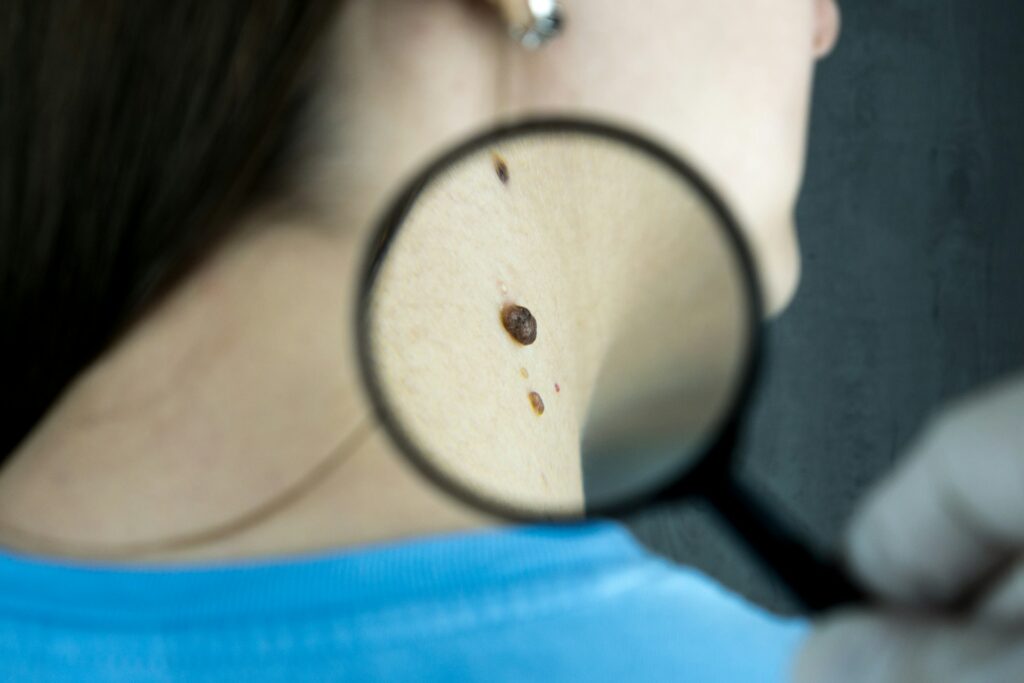Posted by: Skin And Cancer Institute in Medical Dermatology

The golden state of Arizona may boast stunning deserts and a sun-soaked lifestyle, but it also carries a heightened risk for one of the most common skin cancer form. With nearly 5,000 new cases diagnosed yearly, Arizonans are acutely aware of the sun’s damaging potential and the need for vigilant prevention. This guide strives to educate you on the top five skin cancers prevalent in the state and how you can effectively shield yourself from their risks.
The Arizona Sun and Your Skin
Arizona’s abundant sunshine makes it a hotspot for outdoor activities year-round, but it also amplifies the ultraviolet (UV) radiation that damages skin cells and can lead to cancer. The state’s climate encourages a lifestyle involving much sun exposure without adequate protection.
Understanding and minimizing the risks associated with this exposure is critical. Early detection and consistent sun safety practices are your best defenses against Arizona’s five most common types of skin cancer: Basal Cell Carcinoma, Squamous Cell Carcinoma, Melanoma, Actinic Keratosis, and Merkel Cell Carcinoma.
1. Basal Cell Carcinoma
Beginning our list is Basal Cell Carcinoma (BCC), the most frequently diagnosed form of skin cancer. Typically found on sun-exposed areas, BCC often appears as a flesh-colored or brown, flat or raised growth, which may be scaly or smooth.
Risk Factors
While sun exposure is the primary cause, other factors such as age, genetics, and exposure to arsenic can contribute. Most cases are found in older people but are increasing among younger individuals due to sunburns and tanning bed use.
Prevention
Preventing BCC involves using broad-spectrum sunscreen, covering up, and seeking shade during peak sun hours. Regular skin checks are essential, as early diagnosis improves the prognosis significantly.
2. Squamous Cell Carcinoma
Squamous Cell Carcinoma (SCC) is the second most common form of skin cancer. It often presents as a firm red nodule that may bleed, crust over, or a flat, scaly patch.
Risk Factors
Similar to BCC, SCC is primarily caused by UV radiation and can develop due to a history of frequent and intense sun exposure, tanning beds, genetic factors, and a compromised immune system.
Prevention
Preventing SCC means being diligent about sun protection and avoiding tanning practices. Those with a history of skin cancer or a weakened immune system should be especially cautious.
3. Melanoma
Melanoma is less common but more dangerous than other skin cancers. It arises from the pigment-producing cells (melanocytes) and can spread rapidly if not detected early. This cancer can develop from an existing mole or appear as a new dark spot on the skin.
Risk Factors
Risk factors for melanoma include a history of severe sunburns, excessive UV light exposure, having many moles or atypical moles, and a family history of melanoma.
Prevention
The key to preventing melanoma is conscientious sun safety, regular skin self-examinations, and professional skin checks by a dermatologist, especially if you have a family history or several of the risk factors.
4. Actinic Keratosis
Actinic Keratosis is a precancerous skin condition that looks like rough, scaly patches typically found on sun-exposed areas. It’s considered the earliest stage in the development of skin cancer.
Risk Factors
AKs are the result of UV rays from the sun. The risk of AKs is higher if you have fair skin, blond or red hair, and blue, green, or gray eyes.
Prevention
To prevent the progression of AKs to skin cancer, the focus should be on regular skin checks and protecting your skin from UV rays.
5. Merkel Cell Carcinoma
Merkel cell carcinoma is a rare but aggressive and fast-growing skin cancer. It usually appears as a flesh-colored or bluish-red nodule, often found under the skin, and can be painless.
Risk Factors
The main risk factor is UV exposure, especially in Arizona’s intense sunlight. Older patients and those with a weakened immune system are also more susceptible.
Prevention
Prevention involves similar strategies: sun avoidance and protection, protective clothing, and hats. If at high risk due to immunosuppression, regular dermatology check-ups are advised.
Sun Safety in the Copper State
Arizona’s sunny climate necessitates a robust sun protection regimen for every outdoor venture. Prioritize the following practices to safeguard your skin:
- Use Broad-Spectrum Sunscreen: Apply sunscreen with an SPF of at least 30 to any exposed skin, reapplying every two hours or immediately after swimming or sweating.
- Seek Shade: Stay in the shade, especially during midday hours when the sun’s rays are strongest.
- Protective Clothing: Wear long-sleeved shirts, pants, hats, and sunglasses to shield yourself from UV rays.
- Avoid Tanning Beds: Tanning beds emit harmful UV radiation and should be avoided at all costs.
- Sun Exposure for Vitamin D: Balance the benefits of vitamin D against the risks of excess sun exposure. Consider dietary sources and supplements for your vitamin D needs.
Why Regular Skin Checks Matter
While prevention is crucial, regular skin checks with a dermatologist are equally important. Early detection of skin cancer can be life-saving, so make it a point to schedule an annual skin exam, and if you notice any changes in your skin, consult a specialist immediately.
The Final Word on Skin Protection
Arizona’s sunlight is as magnificent as it is potent, and the statistics on skin cancer incidents reflect that reality. Being informed about the types of skin cancers prevalent in the state and practicing consistent sun safety is not just a recommendation – it’s a lifeline.
Make sun protection a part of your daily routine. It’s your first line of defense against the visible and invisible dangers of the sun’s rays. As responsible Arizonans, let’s make a commitment to our skin health and spread the word to friends and family. After all, we’re not just protecting ourselves; we’re preserving the vibrancy of the Copper State for years to come.
PS: If you’re concerned about your risk or have a suspicious spot, don’t hesitate to seek expert advice. The Skin & Cancer Institute is here to support you in your skin health journey.